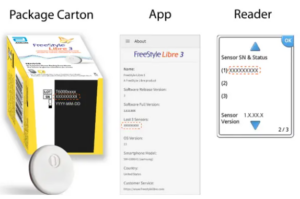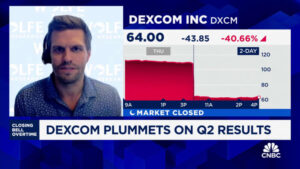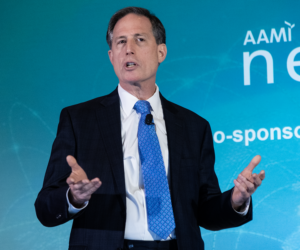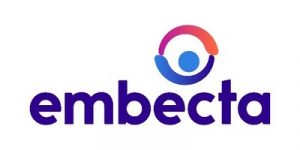Abbott Issues Warning for Certain FreeStyle Libre 3 Sensors by Paul Heltzel for diaTribe.org, 25 July 2024.
 Some FreeStyle Libre 3 continuous glucose monitoring sensors could display false high readings and should be immediately discontinued, urged the manufacturer. Affected sensors will be replaced at no cost.
Some FreeStyle Libre 3 continuous glucose monitoring sensors could display false high readings and should be immediately discontinued, urged the manufacturer. Affected sensors will be replaced at no cost.
Abbott, maker of the FreeStyle Libre 3 continuous glucose monitor device announced that a small number of sensors could display false high glucose readings. This might lead people to see an incorrect high blood sugar reading and take insulin unnecessarily – a potentially dangerous situation.
The Libre 3 system includes an app, reader, and sensor. The reader and app are not affected, only the sensors. The company is urging people to immediately discontinue using sensors from any of these three lots:
- T60001948
- T60001966
- T60001969
Abbott is offering replacements at no cost for any of the affected units. The sensor lot number is printed on the bottom of the sensor kit’s carton. If you no longer have the carton, you can determine the lot by serial number, which is also found on the bottom of the packaging labeled as “SN.”
Read more: Abbott Issues Warning for Certain FreeStyle Libre 3 Sensors
Dexcom shares plunge on lower sales outlook by Elise Reuter for MedTechDive.com, 26 July 2024.
 Dexcom lowered its sales forecast for 2024, surprising Wall Street as it lost market share among durable medical equipment (DME) providers and restructured its salesforce. Shares of the company were down 41%. The diabetes device firm now expects 2024 revenue of $4 billion to $4.05 billion, a decrease from its previous forecast of $4.2 billion to $4.35 billion.
Dexcom lowered its sales forecast for 2024, surprising Wall Street as it lost market share among durable medical equipment (DME) providers and restructured its salesforce. Shares of the company were down 41%. The diabetes device firm now expects 2024 revenue of $4 billion to $4.05 billion, a decrease from its previous forecast of $4.2 billion to $4.35 billion.
“We have higher expectations for our business than what we experienced this quarter,” CEO Kevin Sayer told investors on Thursday, adding that he expects “more from myself and more from my team going forward.”
Sayer attributed the lower sales outlook to three factors: a salesforce restructuring, lower revenue per customer due to rebates, and a loss of market share in the durable medical equipment channel.
Read more: Dexcom shares plunge on lower sales outlook
As GLP-1 sales surge, insulin users fear Novo Nordisk and Eli Lilly will move on without them by Elaine Chen for StatNews.com, 17 July 2024.
 In the U.S., Novo Nordisk’s recent decision to discontinue a product has left patients with fewer options. At the same time, patients are encountering shortages of other products from Novo and Eli Lilly. For months, pharmacies have been running out of vials of certain insulins that patients use to fill the pumps they wear on their bodies. Supply issues have also spread to the U.K., where patients struggle to find not only vials, but also injectable pens of insulin. In South Africa, Novo, which had been supplying the government with human insulin injection pens for years, has stopped providing them, leading the government to alert doctors to prioritize pens for the most vulnerable.
In the U.S., Novo Nordisk’s recent decision to discontinue a product has left patients with fewer options. At the same time, patients are encountering shortages of other products from Novo and Eli Lilly. For months, pharmacies have been running out of vials of certain insulins that patients use to fill the pumps they wear on their bodies. Supply issues have also spread to the U.K., where patients struggle to find not only vials, but also injectable pens of insulin. In South Africa, Novo, which had been supplying the government with human insulin injection pens for years, has stopped providing them, leading the government to alert doctors to prioritize pens for the most vulnerable.
The reasons for the shortages are complex, but the diabetes community fears one factor driving the phenomenon: Insulin manufacturers may be less interested in making it.
In recent years, the companies have faced aggressive pressure from policymakers to lower the prices of insulin. At the same time, Novo and Lilly have discovered a massive new moneymaker — the class of highly effective GLP-1-based drugs for diabetes and obesity.
These injectable medications, which include Ozempic and Mounjaro, are so popular that the companies are frantically building and finding new manufacturing facilities to make them. Their pen devices are similar to the pens that many insulin products come in. As demand for GLP-1s continues to climb, patients and doctors worry the companies may be turning their focus and resources away from insulin and toward GLP-1s.
Read more: As GLP-1 sales surge, insulin users fear Novo Nordisk and Eli Lilly will move on without them
Sleep Apnea May Accelerate Diabetic Retinopathy by Charles Bankhead for MedPageToday.com, 21 July 2024.
 Nonproliferative diabetic retinopathy (NPDR) had a significantly greater risk of progression and complications in patients who also had obstructive sleep apnea (OSA), a large propensity-matched cohort study showed.
Nonproliferative diabetic retinopathy (NPDR) had a significantly greater risk of progression and complications in patients who also had obstructive sleep apnea (OSA), a large propensity-matched cohort study showed.
Consistent with other studies, the risk of systemic events — stroke, myocardial infarction (MI), and premature death — also were significantly higher in patients with NPDR and OSA, said Ehsan Rahimy, MD, of Stanford University in California, at the American Society of Retina Specialists meeting.
“As a parting thought, many of us see patients with diabetes more frequently than they see their primary care doctors on an annual basis,” he added. “Give that some consideration. It behooves us all to just be aware of some basic screening questions, such as the STOP-Bang questionnaire. If patients meet even three of the criteria [for OSA], they should be referred to get a sleep study and higher level of care.“
Read more: Sleep Apnea May Accelerate Diabetic Retinopathy
Diamyd Fast-Tracked for Pediatric Patients at Risk of Type 1 Diabetes by Diana Ernst, RPh, for EMPR.com, 19 July 2024.
 The Food and Drug Administration (FDA) has granted Fast Track designation to Diamyd (recombinant human glutamic acid decarboxylase [rhGAD65]/alum) for pediatric patients with stage 1 or stage 2 type 1 diabetes carrying the genotype HLA DR3-DQ2. This is the second Fast Track designation awarded to Diamyd, an antigen-specific immunotherapy intended to preserve endogenous insulin production. The treatment is also being investigated in the phase 3 DIAGNODE-3 study in adults and adolescents with recently diagnosed stage 3 type 1 diabetes (clinically diagnosed type 1 diabetes) carrying the HLA DR3-DQ2 genotype.
The Food and Drug Administration (FDA) has granted Fast Track designation to Diamyd (recombinant human glutamic acid decarboxylase [rhGAD65]/alum) for pediatric patients with stage 1 or stage 2 type 1 diabetes carrying the genotype HLA DR3-DQ2. This is the second Fast Track designation awarded to Diamyd, an antigen-specific immunotherapy intended to preserve endogenous insulin production. The treatment is also being investigated in the phase 3 DIAGNODE-3 study in adults and adolescents with recently diagnosed stage 3 type 1 diabetes (clinically diagnosed type 1 diabetes) carrying the HLA DR3-DQ2 genotype.
“We are thrilled to receive our second Fast Track designation for Diamyd, this time for its potential to delay the onset of clinically diagnosed type 1 diabetes”, said Ulf Hannelius, CEO of Diamyd Medical. “This recognition once again underscores the potential of our precision medicine approach and the urgent need for new treatment options for type 1 diabetes across the disease spectrum.”
Fast-tracking progress on a T1D treatment: All about Diamyd Medical by Stacey Simms for Diabetes-Connections.com, July 2024.
Read more: Diamyd Fast-Tracked for Pediatric Patients at Risk of Type 1 Diabetes
 After almost 15 years as director of the Center for Devices and Radiological Health (CDRH), Jeff Shuren announced he will leave the US Food and Drug Administration (FDA) later this year. Starting next week, Michelle Tarver, deputy center director for transformation, will take on the role of CDRH acting director.
After almost 15 years as director of the Center for Devices and Radiological Health (CDRH), Jeff Shuren announced he will leave the US Food and Drug Administration (FDA) later this year. Starting next week, Michelle Tarver, deputy center director for transformation, will take on the role of CDRH acting director.
During a CDRH all-hands meeting on 23 July, Shuren announced his plan to retire from the US Food and Drug Administration (FDA). On 28 July, he plans to transfer to the commissioner’s office as center director emeritus to allow Tarver to take the reins and the center transition to a new permanent center director.
Shuren told staff he had achieved several key goals over the years, which led him to consider leaving the agency in 2020. He noted that since he took the reins in 2009, new medical devices authorized in the US increased five-fold, and between 50 and 70 percent of novel devices come to the US or in parallel with other major markets. However, his plans were thwarted when the COVID-19 pandemic hit.
Meet the T1D Moonshot Impact Board: Robert Oringer by StartUp Health, 18 July 2024.
In an interview at the recent American Diabetes Association annual Scientific Sessions, Robert Oringer, a Type 1 diabetes angel investor and a member of StartUp Health’s T1D Moonshot Impact Board, shares his insights and experiences from decades in the field. With a deep passion for preventing hypoglycemia, Robert discusses the innovations and challenges in diabetes care and reflects on his journey in the industry.
Oringer has been attending the ADA conferences since 1990, initially as an entrepreneur. His focus has always been on preventing hypoglycemia, evolving from treating it with glucose products to preventing it with innovative solutions. Oringer’s two sons were diagnosed with Type 1 diabetes in 1997, which deepened his commitment to finding solutions for diabetes management. He and his wife have immersed themselves in the business and philanthropic aspects of diabetes care. Since 2015, Robert’s primary interest has been on preventing hypoglycemia rather than just treating it. He highlights the importance of innovations that can contribute to this goal, such as those addressing occlusions in infusion sets.
Diabetes device firm Embecta considers sale by Elise Reuter for MedTechDive.com, 22 July 2024.
 The Financial Times reported that Embecta hired advisers from investment banking firm Centerview Partners to explore a potential sale, following “lackluster share price performance” after its spinoff from BD. The diabetes company currently has a market cap of $878.9 million as of Monday, and its shares are down more than 60% from when it first went public.
The Financial Times reported that Embecta hired advisers from investment banking firm Centerview Partners to explore a potential sale, following “lackluster share price performance” after its spinoff from BD. The diabetes company currently has a market cap of $878.9 million as of Monday, and its shares are down more than 60% from when it first went public.
“While we do not know whether the report is true, we are not surprised by the suggestion,” Marie Thibault, an analyst with BTIG, wrote in a research note on Monday. Embecta’s sales growth was flat last year, and its net income declined. The company reported revenues of $1.12 billion in its 2023 fiscal year, which ended in September. Its net income of $70.4 million was down 69% compared to fiscal 2022. In January, Embecta said it submitted a patch-pump for people with Type 2 diabetes for Food and Drug Administration clearance.
Read more: Diabetes device firm Embecta considers sale
Why SmartStart Built a Mobile-First, Interactive Educational Platform for People with T1D by StartUp Health, 19 July 2024.
“SmartStart is putting user education about continuous glucose monitoring on your phone,” says Melissa Holloway, the CEO & Founder of SmartStart, a member of StartUp Health’s Type 1 Diabetes Moonshot Community. In this interview at the recent ADA Scientific Sessions, Holloway discusses the innovative approach her company takes to educate users about continuous glucose monitoring (CGM) through mobile technology. She highlights the challenges faced by diabetes patients and the importance of providing accessible, user-friendly education to improve diabetes management and outcomes.



